Designing and Building Powerful Dashboards
2-28-2020 How do you know if you need a dashboard? Does your business collect and track key performance indicator (KPI) metrics? Do you have a large sales team and track individual performance? Do you reference historical data to inform future business decisions or spot trends?
How do you know if you need a dashboard? Does your business collect and track key performance indicator (KPI) metrics? Do you have a large sales team and track individual performance? Do you reference historical data to inform future business decisions or spot trends?
If you answered yes to any of these questions, your business will benefit from a dashboard.
Dashboards are a powerful way to share key data points at a glance. Utilizing a central location where data is accessible to everyone saves time – gone are the days where you have to reach out to numerous people to generate the report you need. Data at your fingertips and having it available on mobile devices is so much easier than reading through a dense report. Lastly, dashboards bring data to life! They are engaging and can be a great for motivating teams.
What Data Should be on a Dashboard?
Content is key when designing a dashboard. Businesses often collect and report on various different datasets to help make decisions; but numerous datasets can make it difficult to determine what data should be represented on a dashboard. Larger companies may have a need for different dashboards for various departments. For example, a supply company would have a need for an operational dashboard to monitor real-time data and spot any issues or discrepancies. Whereas the CFO of that same company would likely want a dashboard to see a high level of the company’s Q1 performance, as well as have the ability to compare current data with historical data to surface trends.
It’s important to only surface the most important metrics; a cluttered dashboard goes against the purpose of having a dashboard - all metrics need to be easily recognized and understood at a glance. To aid in understanding, it is helpful to include identifiable and recognizable icons and/or labels by each dataset.
Elements of a Great Dashboard

We’ve seen and designed numerous dashboards for our clients and have learned that no two dashboards are completely alike. However, there are best practices that our design team includes on all dashboards that support a great user experience:
- Data and content hierarchy – The most important data should always be at the top of the dashboard, but still allow users to drill down into the datasets that are the most important to them.
- Animated graphs and charts – Data is fun, it should be fun on the dashboard. Charts are a great way to represent data in an easily digestible format; animation helps bring the data to life, helps indicate interactivity, and engages users.
- Clear labels of each dataset with historical trend indicators – Labels are a great way to indicate if changes in data are positive or negative; it’s important that the changes in data are clearly represented and allow users to change date ranges to identify trends.
- Iconography and color strategy – Iconography and use of color are great techniques for drawing attention to specific areas on the screen.
- Gamification – Performance or eLearning Dashboards are more powerful when there are gamification techniques utilized to motivate teams.
- Mobile friendly – Everyone has their phone on them at all times and your dashboard should be accessible on the go.
- Exportable reports – All data should be exportable via Excel or PDF to share with other departments who may not have access to your dashboard.
Different Kinds of Dashboards
Dashboards can be built for various departments, as well as roles. Some common dashboards are:
- Executive – These typically include goals and KPIs that executive teams monitor on a regular basis to identify trends. They can also include data on their employee’s or department's performance.
- Analytical – Think Google Analytics. These dashboards include tools for users to drilldown further into datasets and typically have more advanced filtering and tools to glean additional insights into data trends.
- Operational – These are great for supply chains or product sales tracking. The datasets included can help identify real-time issues and help observe progress over time to determine if set goals will be met.
Dashboard Designs We Love
Here are some of our favorite dashboard inspirations. If you are interested in a dashboard to glean more insight into your business, call us to schedule a consultation.

Image Credit Andrey Rybin (Dribble)

Image Credit Smart Insights


Image Credit UX Planet

